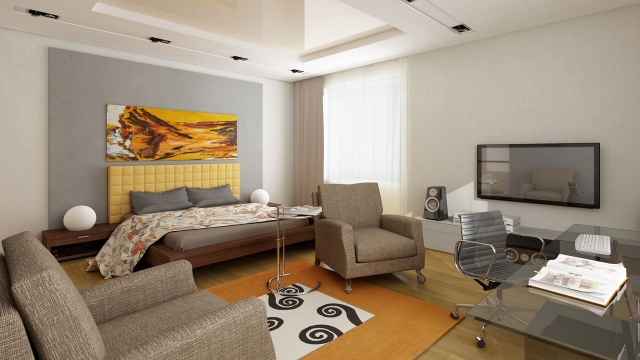
Mastering the Art of Design and Code: The Dynamic Duo of Graphic Design and Software Development
Graphic design and software development are two distinct yet interconnected disciplines that form the dynamic duo responsible for creating visually stunning and highly functional digital experiences. While graphic design focuses on the aesthetic aspects, such as color theory, typography, and layout, software development brings these designs to life through coding and programming. The synergy between these two fields is essential in today’s digital age, where seamless user experiences and visually captivating interfaces are paramount.
In this guide, we will explore the fundamental concepts and techniques behind both graphic design and software development, shedding light on how these disciplines intertwine to create impactful digital solutions. Whether you are a designer looking to expand your skill set or a developer eager to enhance your understanding of design principles, this article will delve into the key aspects of each field and provide valuable insights into their effective collaboration.
From the initial stages of conceptualization and wireframing, through the iterative design process, to the final development and deployment of a product, our guide will walk you through the entire journey. We will examine the principles of design thinking, color theory, typography, and layout, equipping you with the necessary knowledge to craft visually engaging and user-friendly designs. Simultaneously, we will explore software development methodologies, programming languages, and frameworks, enabling you to bring these designs to fruition while ensuring optimal performance and functionality.
Through understanding the symbiotic relationship between graphic design and software development, you will gain a holistic perspective on the creation of digital products. By honing your skills in both areas, you will possess the power to seamlessly merge creativity and technical prowess, resulting in highly polished and impactful digital experiences. So, let’s embark on this journey together as we unlock the secrets behind the art of design and code.
Understanding the Role of Graphic Design in Software Development
Graphic design plays a crucial role in software development, as it focuses on creating visually appealing and user-friendly interfaces. The design elements are responsible for engaging users, guiding them through the software, and ensuring a seamless and enjoyable experience.
One of the key aspects of graphic design in software development is creating intuitive layouts. By strategically arranging elements such as buttons, menus, and content sections, designers can effectively communicate the software’s functionality and hierarchy to the user. A well-designed layout ensures that users can easily navigate through the application without feeling overwhelmed or confused.
Furthermore, graphic design also contributes to the overall brand identity and visual consistency of the software. Through the use of colors, typography, and images, designers can create a unique and recognizable style that aligns with the software’s purpose and target audience. Consistent branding enhances user perception, trust, and creates a cohesive user experience across different screens and interactions.
Lastly, graphic design brings life to the software by incorporating visually engaging elements. This includes creating eye-catching icons, illustrations, and animations that add a sense of delight and excitement to the user’s journey. Visual elements contribute to the software’s aesthetics, making it more engaging and memorable.
In conclusion, graphic design is a fundamental element in software development. It goes beyond creating visually appealing interfaces; it plays a pivotal role in ensuring usability, brand identity, and overall user experience. Effective graphic design can greatly enhance the success of a software product by capturing the attention of users, guiding them through the application, and ultimately leaving a positive lasting impression.
Bridging the Gap: Integrating Graphic Design and Software Development
In the world of design and development, the synergy between graphic design and software development plays a critical role. It is the perfect blend of creativity and technical expertise that brings remarkable outcomes. Graphic design and software development guide us through the creation of visually appealing and functional digital experiences.
When graphic design intertwines with software development, the result is a harmonious collaboration that brings design concepts to life. The process involves seamlessly integrating aesthetic elements with robust coding techniques. This collaboration allows designers and developers to work together, leveraging their respective skills to build user-friendly and visually captivating applications.
The graphic designer’s role is to visually communicate the message and essence of a brand or product, while the software developer’s role is to ensure that all elements function smoothly and effectively. Bridging the gap between these two disciplines is essential for creating solutions that not only look visually stunning but also offer a seamless and intuitive user experience.
By integrating graphic design and software development, designers can gain a deeper understanding of the technical possibilities and limitations. They can create designs that not only captivate visually but also align with the capabilities and requirements of the underlying software. On the other hand, software developers can learn to appreciate the importance of design principles and user experience, allowing them to build applications that not only function flawlessly but also engage users on a visual level.
In the dynamic duo of graphic design and software development, the possibilities are endless. The integration of these two disciplines allows for the creation of visually stunning and highly functional digital experiences. It bridges the gap between creativity and technical implementation, resulting in products that leave a lasting impact on users.
Best Practices for Harmonizing Design and Code
The synergy between graphic design and software development is essential for creating visually stunning and functional applications. To ensure a smooth collaboration between designers and developers, it is crucial to follow some best practices. Here, we will explore three key principles that promote the harmonization of design and code.
Houston Website Design
Clear Communication: Effective communication plays a vital role in bridging the gap between design and code. Designers should clearly articulate their creative vision, including color schemes, typography, and layout, to developers. Likewise, developers should provide regular feedback to designers, ensuring that technical constraints and possibilities are understood. By maintaining open lines of communication, both parties can work together to translate designs into functional code seamlessly.

Collaboration in the Iterative Process: Design and code are not linear, but rather iterative processes. Thus, designers and developers must collaborate throughout the entire project lifecycle. Regular check-ins, design critiques, and code reviews help identify any misalignments promptly. This iterative approach encourages continuous improvement and ensures that design decisions are implemented effectively in the final product.
Establishing Design Systems: Design systems are libraries of reusable components, style guides, and standardized practices. They serve as a bridge between design and code by providing a shared language and set of guidelines. Designers can align their work with the existing design system, reducing the need for developers to recreate complex elements. Similarly, developers can use the design system’s components and patterns to ensure visual consistency and streamline the coding process.
By adhering to clear communication, maintaining collaboration, and establishing design systems, designers and developers can achieve a harmonious integration of graphic design and software development. Embracing these best practices empowers the dynamic duo to create innovative and visually captivating applications that truly stand out.
Remember, the journey of mastering the art of design and code is an ongoing process filled with continuous learning and growth. Applying these principles will foster a productive environment for both designers and developers, ultimately resulting in software products that combine aesthetic appeal with cutting-edge functionality.




